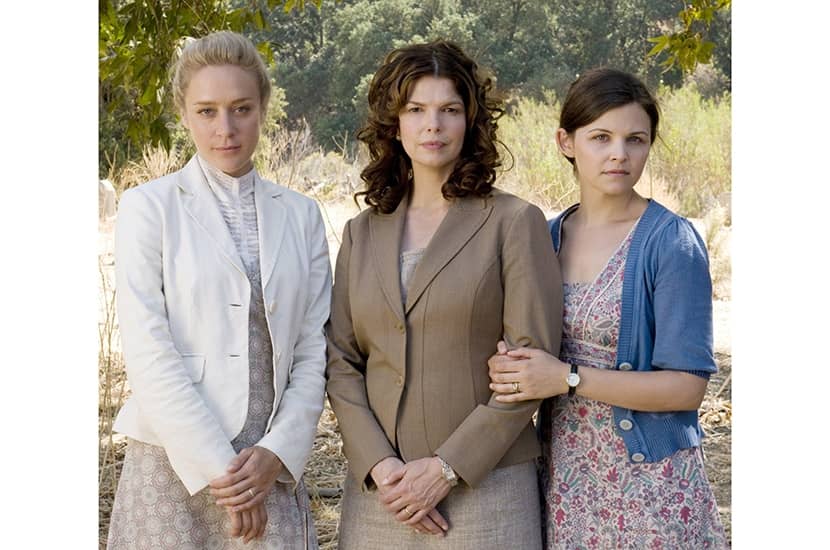The rules of sex can kill. In 1844 an angry mob shot Joseph Smith, the founder of Mormonism, for his polygamous ways. But in the counterculture today, polyamorists face less of a physical threat and more of a metaphysical one, as chronicled by the journalist Rachel Krantz in her tortured book Open: An Uncensored Memoir of Love, Liberation and Non-Monogamy.
At its heart is the dark tale of a vulnerable woman falling for a manipulative man who slowly sucks the soul and marrow out of her. I wondered: why write this book, Rachel? You’re on the path to healing, so why peel your skin off with your nib and present it to the reader? Krantz offers her own diagnosis: “Dating Adam elicited masochistic tendencies”; she assuaged his desires by becoming polyamorous in the first place. Perversely, despite a whole book detailing how miserable she was, Krantz continues to toot the trumpet for polyamory, blaming her relationship rather than the idea.
The pain she endures and her dedication to the “unfiltered” make Open the perfect title. Krantz seems to have neither emotional nor sexual boundaries; nor, for that matter, linguistic ones. She identifies at one point what she calls her “high stream of consciousness,” and curious similes abound: “I nodded appreciatively, like he was some sort of hot Mother Teresa”; “When he smiled, the crinkles drew his face up like the curtain before a symphony.” The book is a generic pick’n’mix of pop psychoanalysis, cultural criticism and the kind of diary entries a teenage girl writes on tear-stained pages. Krantz throws in allusions to academic works such as Sex at Dawn (a revisionist account of the evolutionary origins of human sexual behavior); but other intellectual references include a feminist analysis of the Little Mermaid that she produced while high on magic mushrooms.
Open also includes an excellent X-rated glossary, ideal for the pervy logophile: MFM/FMF threesomes, hot-husbanding, hotwifing, sex parties, BDSM, girl-on-girl, consensual non-consent, sex dungeons, scabies, pegging and stealthing. For the uninitiated, it might be useful to know that pegging is not something you’d do camping and definitely not something to Google at work. Similarly, hot-husbanding is not chucking a woolly sweater at your man in January and hotwifing isn’t, as I learned to my chagrin, a portmanteau of “hotspotting” and “WiFi.”
The book invites us to consider the claim that “ethical non-monogamy” can ease relationship issues of possessiveness, jealousy, insecurity and competition. Krantz shows how destructive polyamory can be in a toxic relationship: “I stared into the mirror at my now common sex bruises, once a source of pride. I looked into my puffy eyes and asked myself a question: so, Rachel, is this liberation?” When Adam gives Rachel a “promise ring” (which might as well be a Haribo for all the commitment it implies), he follows it with the line: “The truth is, everyone’s only as loyal as their options.” As he pushed the negging splinter deeper, I stifled the urge to yell out like a pantomime audience: “He’s behind you!”
Open leaves you with the queasy feeling that even today polyamorous men get the better deal. Polygamous Mormon men certainly do, as the doctrine still doesn’t accommodate women having more than one husband. Krantz underlines this gender imbalance by quoting bell hooks’s Communion: “The female’s first lesson in the school of patriarchal thinking [is that] she must be good to be loved. And good is always defined by someone else.” On the evidence of this book, polyamory demands yet another set of definitions.
Interviewing forty-two people for my love and sex podcast The Cupid Couch, I learned that countercultures and sex parties have a longer list of rules than the boring monogamists: which rooms you can have sex in, color coding, safe words, forms, tests, and when you can see your lovers. Given that polyamory is so evolved, why is it reminiscent of that scene in the Mormon TV show Big Love where the three “sister wives” of Bill Paxton’s character sit around brandishing highlighters and pens to organize their connubial time with their shared husband?
As well as struggling with its unrelenting and deliberately unedited style, I wasn’t persuaded by Krantz that polyamory is an easily achieved romantic utopia. So if you fancy more than one lover, I can’t help wondering whether good old-fashioned infidelity isn’t easier. At least then you don’t need a glossary.
This article was originally published in The Spectator’s UK magazine. Subscribe to the World edition here.

























